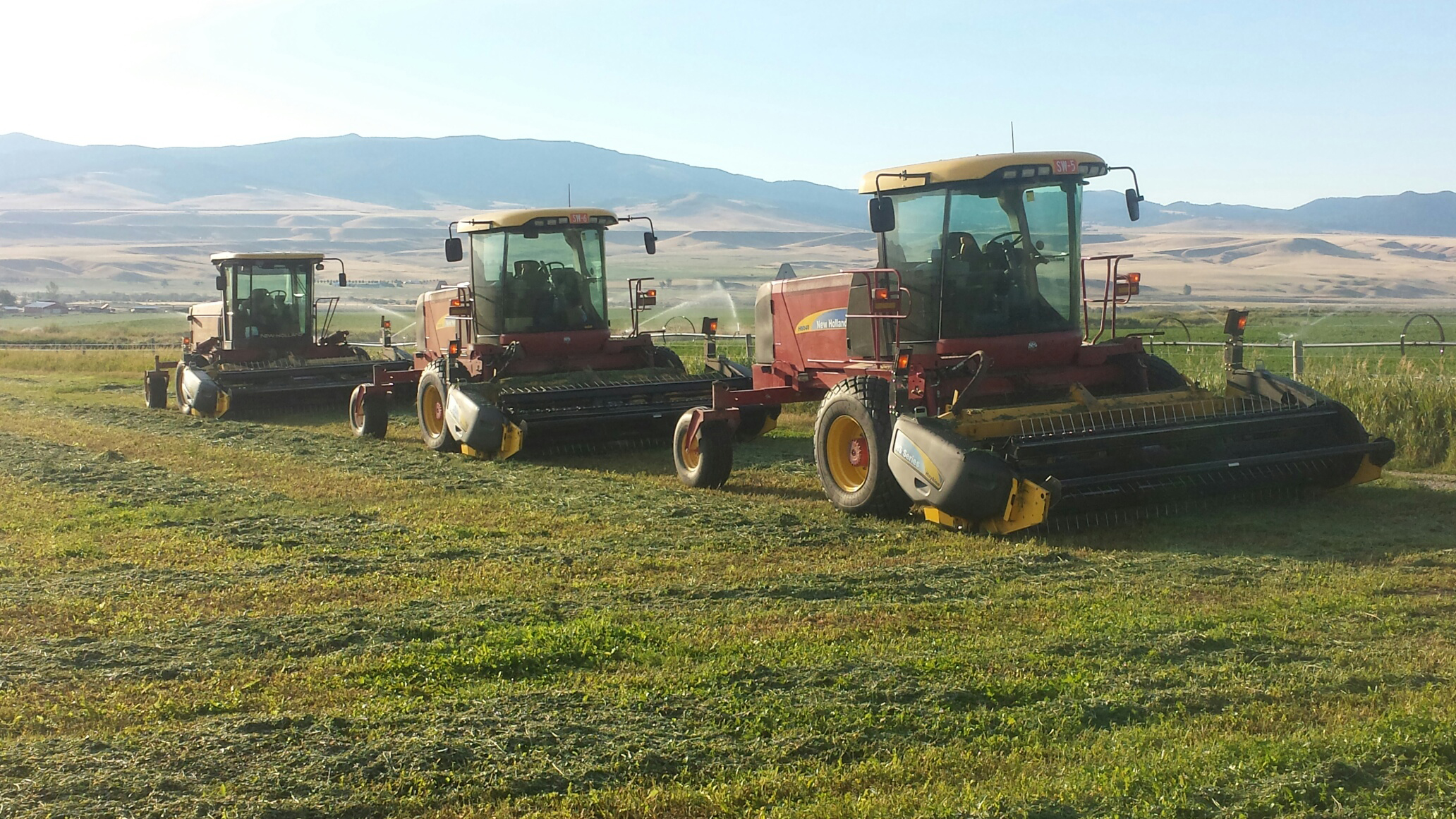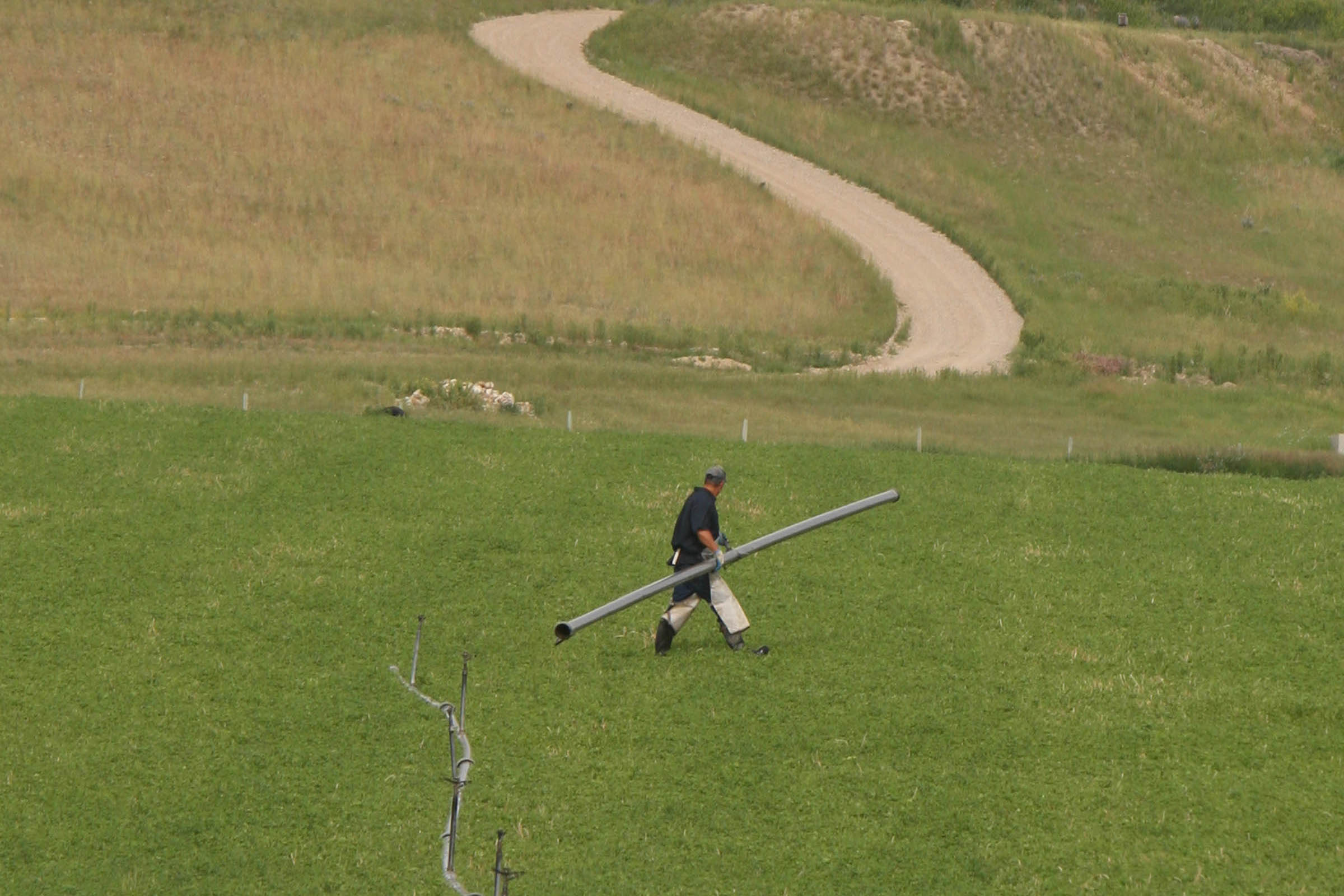Home > Montana > Montana Farm to Table > Montana Correctional Enterprises Helps Inmates Rewrite Their Futures
Montana Correctional Enterprises Helps Inmates Rewrite Their Futures

Agriculture provides an opportunity for growth, whether seedlings in the field or someone learning a new skill. Located on 37,000 acres of rolling foothills, Montana Correctional Enterprises (MCE) offers work training and job opportunities to inmates at Montana State Prison through its cutting-edge agricultural program.
Previously referred to as the prison farm, the agricultural program has been a part of the Montana Correctional Enterprises division for more than 35 years. Multiple programs are offered, but the agricultural program centers on beef and dairy cattle operations, dairy milk processing and crop production.
“We raise 1,600 predominantly Black Angus beef cows, milk 350 Holstein dairy cows daily and grow hay on approximately 2,500 acres,” says Ross Wagner, MCE agricultural director. The program is also responsible for farming around 500 acres of barley, alfalfa and oats.
Feeding the State
The products produced through the dairy include everything from buttermilk and butter to ice cream and yogurt. These items accompany meals produced by another MCE program called The Food Factory, which feeds seven other operations across the state, including Montana State Hospital in Warm Springs, the WATCh Program in Warm Springs, Anaconda-Deer Lodge County Jail, Elkhorn Treatment Center, Riverside Correctional Facility, Lewis and Clark County Corrections and Helena Prerelease Center.
MCE sells beef cattle on the open market through a video livestock auction or the local auction yard. All sold cattle must be shipped out of state to avoid the ranch brand being on cattle in other locations and to avoid competing with local ranchers.

A Day on the Ranch
Perhaps more impressive, 91 percent of all MCE training and work programs and 100 percent of the agricultural operations are self-funded, providing valuable training to inmates classified as “low custody.”
After completing a rigorous interview process and meeting the list of requirements, those hired have the opportunity to work in the dairy, on the pipe crew, wildland fire crew, the community work program or cowboy crew.
Jobs available to inmates include milking, feeding, calving, lab technology and processing in the dairy; moving pipes, operating equipment and working on mechanics on the pipe crew; horse training and fencing on the cowboy crew; and more.

Breaking the Cycle
While the program offers very tangible benefits for countless people across the state of Montana, its true value hits close to home.
When an inmate participates in the agricultural work program, they learn what it means to show up day after day, work long and hard hours, and see the fruit of their own labor – whether it’s through a repaired fence, the birth of a new calf or simply going to bed knowing they saw something through from beginning to end.
“This program gives offenders a purpose,” says Gayle Butler, MCE administrator. “They learn job and life skills and, often for the first time in their lives, feel the pride of a job well done.”
These transformative benefits outweigh the cattle and milk products produced in the program.
“Seventy percent of offenders who have been involved with MCE programs for one year or more tend to remain out of prison,” Butler says. “We’ve also seen that the four-year average decrease in recidivism, which is defined as a return to prison for any reason within three years of release, stands at 22 percent for program participants.”
Those numbers represent a great cost-savings to taxpayers, but they also represent new beginnings, safer neighborhoods and stronger communities across Montana.
“Programs like this are important because they give inmates a feeling of self-worth and instill in them a strong work ethic,” Wagner says. “To echo what Butler stated, the recidivism rates drop dramatically with longevity in our programs. We’re seeing more inmates getting jobs and staying out of prison once they go back into society.”




[…] Similar practices: In Maine, the Maine State Prison and the Bolduc Correctional Facility both have similar farm and gardening programs. Examples of other “farm-to-prison” programs across the country include those at the Richard J. Donovan Correctional Facility in California, the Washington State Department of Corrections, and Montana State Prison. […]
Has there ever been a prison facility at Springdale? There is a road in the area named prisoner road or such another and low stone wall fences, fire hydrants and such that would indicate a facility of some sort. Not having any luck researching.
… [Trackback]
[…] There you will find 40484 more Infos: farmflavor.com/montana/montana-farm-to-table/montana-correctional-enterprises-helps-inmates-rewrite-futures/ […]